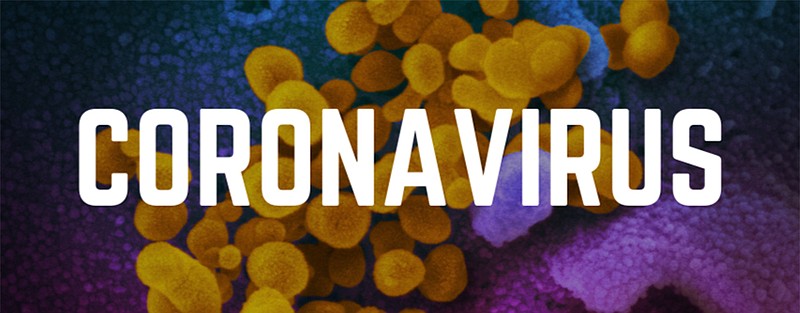The delta strain of the coronavirus is spreading rapidly through communities, Missouri state health officials said Friday.
Even in communities with highly vaccinated populations, it is transmitting quicker and to younger populations than earlier strains, they said.
And data show Missouri is heading toward widespread infection from the virus that causes COVID-19.
Missouri State Epidemiologist George Turabelidze said the delta variant is especially dangerous for people who have not received a COVID-19 vaccination. Turabelidze spoke during a virtual news conference hosted by the Missouri Department of Health and Senior Services.
The agency held the conference in response to numerous questions it is receiving from national and local news outlets after the state suddenly dropped from among the top five U.S. states in virus transmission to the bottom five.
"The future outbreaks and epidemics will happen locally, and even hyper-locally, especially in vulnerable spots," Turabelidze said. "Unfortunately, Missouri turned out to be among those states that do have those vulnerable spots."
Parts of Missouri - particularly rural counties - have remained among the areas around the nation with the lowest vaccination rates. Those counties have been hard-hit with the spread of the delta variant.
"Those are spots where people are under-vaccinated, where people have low natural immunity level, and some communities that assume that the pandemic was already behind us," he said. "And mitigation was dropped too quickly. All those factors made us vulnerable as a state. And that's what happened, as it was predicted."
Areas with different levels of vaccinations will experience different effects from the virus, Turabelidze said. The delta variant is moving from rural areas into urban areas.
Parts of the Bootheel, Columbia and the Kansas City and St. Louis metro areas have increasing viral loads, he said.
Fortunately, those communities already have better vaccination rates, so the effects may be less severe than they have been in other communities.
In Southwest Missouri, for example, hospitals are filling to capacity. Counties in the extreme southwest portion of the state are burdened because their vaccination rates remain in the teens.
Adam Crumbliss, director of the DHSS Division of Community and Public Health, said Missouri and other Midwestern states benefited by being in the heart of the nation. Coastal states were the first to begin seeing outbreaks of COVID-19 in early 2020.
"One of the significant differences with the delta variant - that spread has begun in the Midwest," Crumbliss said. "And is really an opportunity for us to use our resources in collaboration at the local, state and federal level to help provide lessons and information for states in other portions of the country."
The motivation for change in public health strategies in Missouri is going to come down to communication, Crumbliss added. The state has to reach communities of color and "communities of interest" that have lower vaccination rates than others.
Missouri's culture is that of skepticism, he continued.
"Missourians are a skeptical people, and we have to demonstrate with data - and convincing arguments, facts and most importantly logic - to help move people into action," Crumbliss said. "That skepticism is a good reminder that fear is not the means in which to move forward in Missouri. The way to move forward is an aggressive action plan and engagement at the very individual leve; - and then having trusted voices on the ground."
Data about the delta variant show its transmissibility appears to be different than previous variants. It doesn't appear to target "upper-age categories" as much as previous variants. It appears to affect younger generations more.
"A large part of that, we believe, is that we do have trailing rates of vaccination in those younger generations," he said.
So it's important to continue pushing forward with research into the safety of vaccinations for youth ages 5 and older.
Questions have also been raised about the use of federal COVID-19 surge or strike teams.
The state looks forward to hearing more from the Centers for Disease Control and Prevention about how the strike team assessment program would look, Crumbliss said. The CDC wants to engage by putting more people into states as part of the strike team effort.
Missouri wants to know what that team is comprised of and what resources it will provide.
It is a routine practice for the federal government to provide support to states, Turabelidze said. There was an announcement that thousands of strike teams would be available to states, but details have yet to be released, he added. States are concerned about the objectives of the strike teams, their objectives and their timing.
The Springfield-Greene County Health Department, supported by DHSS, made a request of support to the federal government, he said. In response, two CDC epidemiologists are on the ground. One is focusing on vaccine hesitancy and communications. The other is assisting with reviews on accumulating data concerning possible vaccine breakthroughs and rates of infection.
Asked if mandatory masking might become a possibility, Turabelidze responded that Missouri continues rating its pandemic level locally. Local communities are responsible for determining countermeasures to the pandemic.
He also said there are appropriate measures based on each activity level. Within those ratings, core-based statistical areas (CBSAs) and counties that during the previous week reported new cases at or above 101 per 100,000 population and a positivity of 10.1 percent or higher are considered Red Zones.
Orange Zones are CBSAs and counties that, during the week, reported new cases between 51-100 per 100,000 and positivity between 8-10 percent.
Yellow Zones are those geographic areas that reported new cases between 10-50 percent and positivity of 5-7.9 percent.
That has not changed, Turabelidze said.
"If you are in a community that has red level, you should follow those countermeasures," he said. "Maybe cancel large crowd gatherings. The same framework still remains."
As of July 2, Mid-Missouri's Boone, Camden, Cole, Miller and Morgan counties were considered Red Zones; Callaway County was considered an Orange Zone; and Maries and Osage counties were considered Yellow Zones.

